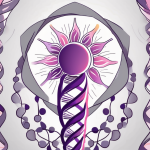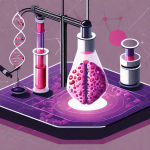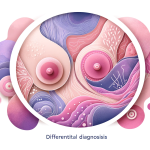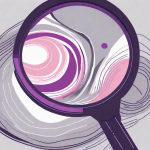This comprehensive article emphasizes the importance of early detection and awareness of breast cancer, a condition that significantly impacts women worldwide. Breast cancer arises from abnormal cell growth in breast tissues, with various factors such as genetics, hormonal imbalances, and lifestyle choices influencing its development. The article highlights that breast cancer varies in type and stage, making early detection through screenings like mammograms and self-examinations crucial for effective treatment. It outlines key physical signs to watch for, including changes in breast size or shape, skin changes, and nipple alterations. Non-physical symptoms like fatigue, weakness, and unusual pain are also discussed as potential indicators. The piece stresses the importance of understanding personal risk factors and maintaining regular screenings for early breast cancer detection. This insightful guide empowers women to take proactive steps in breast health management, reinforcing the message that early detection can significantly improve treatment outcomes.
Breast cancer is a serious condition that affects millions of women around the world. Recognizing the signs and symptoms early on is crucial for successful treatment and improved outcomes. By understanding the basics of breast cancer, recognizing the physical signs, being aware of non-physical symptoms, and understanding the importance of regular screenings, you can empower yourself to take charge of your breast health. If you notice any changes or have concerns, it is important to consult with your doctor. Let’s explore all of these aspects in detail.
Understanding Breast Cancer
When it comes to breast cancer, knowledge is power. Understanding the basics of this disease is the first step towards early detection and effective treatment. Breast cancer occurs when abnormal cells in the breast grow uncontrollably, forming a tumor. These cells can invade nearby tissues and spread to other parts of the body, a process known as metastasis. While breast cancer primarily affects women, it can also occur in men.
The Basics of Breast Cancer
Breast cancer can vary in type and stage, which affects prognosis and treatment options. The most common types include ductal carcinoma, lobular carcinoma, and inflammatory breast cancer. Regular screenings and self-examinations play a crucial role in detecting breast cancer at an early stage.
Early detection is key in improving breast cancer outcomes. Regular mammograms, clinical breast exams, and self-examinations are important tools in detecting breast cancer at its earliest and most treatable stages. Mammograms, which are X-ray images of the breast, can often detect breast cancer before a lump can be felt. Clinical breast exams, performed by healthcare professionals, involve a thorough examination of the breasts and surrounding areas to check for any abnormalities. Self-examinations, done by individuals at home, involve feeling the breasts for any lumps, changes in texture, or other unusual signs.
It is important to note that not all breast lumps are cancerous. Many benign conditions, such as cysts or fibroadenomas, can also cause lumps in the breast. However, any new lump or change in the breast should be evaluated by a healthcare professional to determine the cause.
How Breast Cancer Develops
In most cases, breast cancer develops from genetic mutations that occur over time. While specific causes are still being researched, risk factors such as age, family history, hormonal factors, and lifestyle choices can increase the likelihood of developing breast cancer. However, it’s important to remember that having risk factors does not necessarily mean that you will develop breast cancer.
Age is a significant risk factor for breast cancer. The risk of developing breast cancer increases as a person gets older, with the majority of cases occurring in women over the age of 50. However, breast cancer can occur at any age, and it’s important for women of all ages to be aware of their breast health and to discuss any concerns with their healthcare provider.
Family history also plays a role in breast cancer risk. Women who have a first-degree relative, such as a mother or sister, who has been diagnosed with breast cancer have a higher risk of developing the disease themselves. This risk increases if the relative was diagnosed at a young age or if multiple family members have been affected.
Hormonal factors, such as early menstruation, late menopause, and hormone replacement therapy, can also influence breast cancer risk. Women who started menstruating at an early age or went through menopause at a later age have a slightly higher risk of developing breast cancer. Additionally, the use of hormone replacement therapy, especially for an extended period, can increase the risk of breast cancer.
Lifestyle choices can also impact breast cancer risk. Factors such as obesity, lack of physical activity, excessive alcohol consumption, and smoking have been associated with an increased risk of breast cancer. Maintaining a healthy weight, engaging in regular exercise, limiting alcohol intake, and avoiding smoking can help reduce the risk of developing breast cancer.
While understanding the risk factors for breast cancer is important, it’s crucial to remember that anyone can develop the disease, regardless of their risk profile. Regular screenings, self-examinations, and awareness of changes in the breast are essential for early detection and improved outcomes.
Recognizing the Physical Signs
Being aware of the physical signs of breast cancer is essential for early detection. If you notice any changes in your breasts, it is important to take them seriously and consult with your doctor. The following physical signs should not be ignored:
Changes in Breast Shape or Size
Pay attention to any changes in the shape or size of your breasts. Dimpling, puckering, or unusual swelling may be signs of underlying breast cancer. Regularly examining your breasts in front of a mirror can help you notice any changes.
Skin Changes on the Breast
Look out for any changes in the texture or color of the skin on your breasts. Redness, rash-like patches, or scales could be warning signs. Any unexplained itching or irritation should also be investigated further.
Nipple Discharge and Other Nipple Changes
If you experience any nipple discharge, especially if it is bloody or happens without squeezing, it is essential to consult with your doctor. Other nipple changes, such as inversion or sudden changes in shape, should also be taken seriously.
Non-Physical Symptoms of Breast Cancer
Breast cancer can also present itself through non-physical symptoms. While these may be less noticeable, it’s important to be aware and not dismiss them, especially if they persist:
Unexplained Fatigue and Weakness
If you find yourself constantly tired and lacking energy, it could be a sign of an underlying health issue, including breast cancer. Fatigue that does not improve with rest should be discussed with your doctor.
Unusual Pain or Discomfort
Persistent pain or discomfort in the breast, chest, or armpit area should not be ignored. While breast pain is often not associated with breast cancer, it is essential to have any persistent or unexplained pain evaluated by your doctor.
Importance of Regular Screening
Regular screenings are a vital part of maintaining your breast health. Screening tests can help detect breast cancer at an early stage when treatment is most effective. The two primary screening methods are mammograms and self-examinations.
Mammograms and their Role in Early Detection
A mammogram is an X-ray of the breast that can detect cancerous growths even before they can be felt. It is recommended that women over the age of 40 undergo regular mammograms to screen for breast cancer. However, individual circumstances may vary, so consult with your doctor to determine the best screening schedule for you.
Self-Examination Techniques
In addition to mammograms, self-examinations are an essential tool in detecting breast cancer. By regularly examining your breasts for any changes, you become familiar with what is normal for you. If you notice any changes or have concerns, contact your doctor right away.
When to Consult a Doctor
If you notice any of the physical signs or experience non-physical symptoms mentioned earlier, it is crucial to consult with your doctor promptly. Your doctor can help assess your risk factors and determine the appropriate next steps, including additional tests or referrals to specialists if necessary.
Understanding Risk Factors
It’s important to remember that having risk factors does not guarantee that you will develop breast cancer. However, being aware of your individual risk factors can help guide conversations with your doctor and inform decisions about screening and prevention strategies.
Discussing Concerns and Symptoms with your Doctor
Don’t hesitate to discuss any concerns or symptoms you may have with your doctor. They are there to provide guidance and support. Early detection and prompt treatment increase the chances of successful outcomes, so taking action as soon as possible is crucial.
Remember, you are your own best advocate when it comes to your health. By staying informed, being aware of the signs and symptoms, and maintaining regular screenings, you are taking important steps towards breast cancer prevention and early detection. Take care of yourself and prioritize your breast health today!






